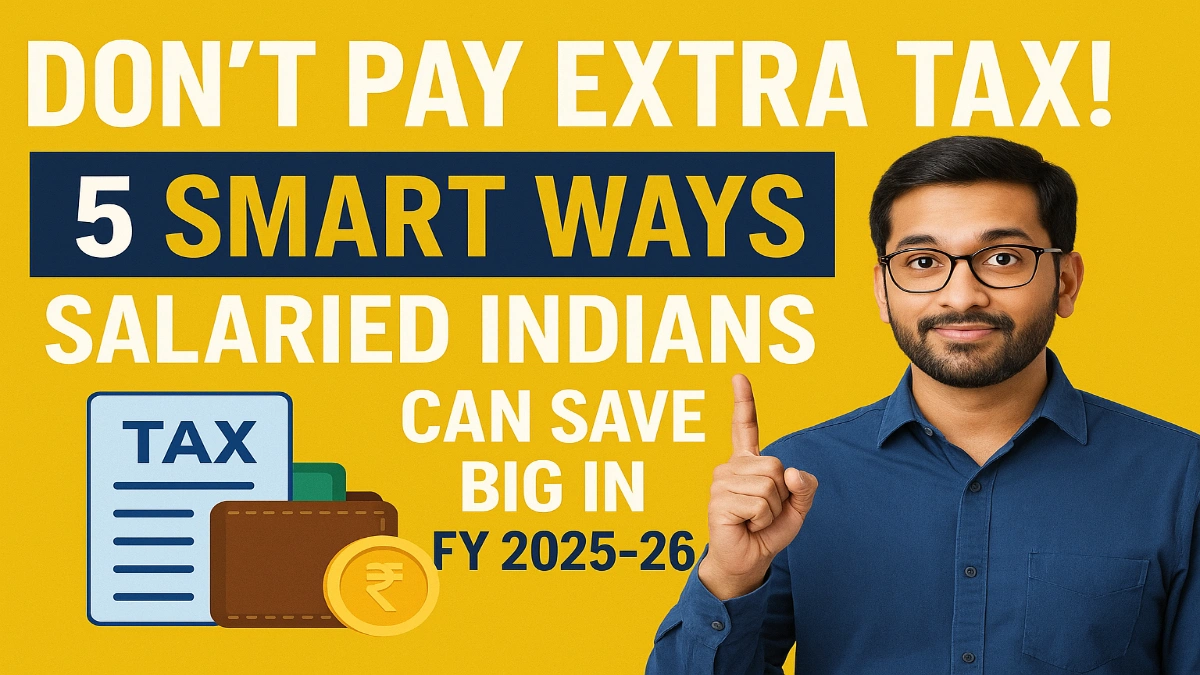5 Smart Ways Salaried Indians Can Save Big in FY 2025-26
5 Smart Ways Salaried Indians Can Save Big in FY 2025-26: Tax season can be stressful, especially if you’re a salaried employee trying to figure out how to save money legally. But with a little planning, you can slash your tax bill without breaking any rules. Here are 5 practical tax-saving tips that every salaried Indian should know for the financial year 2025-26.
1. Make the Most of Section 80C (Up to ₹1.5 Lakh)
Section 80C is your best friend during tax season. It allows deductions up to ₹1.5 lakh through various investments and payments, such as:
- ELSS Mutual Funds – Offers tax savings and market-linked growth. Plus, just a 3-year lock-in!
- Public Provident Fund (PPF) – A safe long-term savings tool.
- Life Insurance Premiums – Helps save tax and secure your family’s future.
- Employee Provident Fund (EPF) and home loan principal repayment also qualify.
💡 Quick Tip: ELSS gives higher returns than PPF and has the shortest lock-in period.
2. Use Section 80D for Medical Insurance
Health insurance can also help you save tax:
- Claim ₹25,000 for insurance of self, spouse, and kids.
- If your parents are senior citizens, you can get an extra ₹50,000 deduction.
- Even preventive health check-ups are covered up to ₹5,000 within the overall limit.
3. HRA or Home Loan – Pick the Right One for You
If you’re living on rent:
- Use your House Rent Allowance (HRA) benefit.
- You can even claim HRA if you pay rent to your parents (just make sure to keep rent receipts).
If you own a home:
- Claim up to ₹2 lakh interest on a home loan under Section 24(b).
- The principal repayment can be claimed under Section 80C.
💡 Bonus Tip: Education loans also offer unlimited deduction on interest under Section 80E, whether it’s for you, your spouse, or kids.
4. Don’t Overlook Education Loan Benefits (Section 80E)
If you’re repaying an education loan, the entire interest amount is tax-deductible – and there’s no upper limit. This is valid for higher education loans taken for yourself or immediate family members.
5. New Tax Regime – Only If You Have Fewer Deductions
The New Tax Regime promises lower tax rates, but there’s a catch – most exemptions and deductions are gone.
So, how do you decide?
📊 Do a quick check:
If your total deductions (80C, 80D, HRA, etc.) are more than ₹2.5–₹3 lakh, stick with the Old Regime – it may save you more.
Disclaimer: The author of this article is a Chartered Accountant and founder of Gakhar and Associates, offering advisory services in tax, GST, and business compliance.
Read More.
100+ Important Topics and Syllabus for UPSC Prelims and Mains 2025

